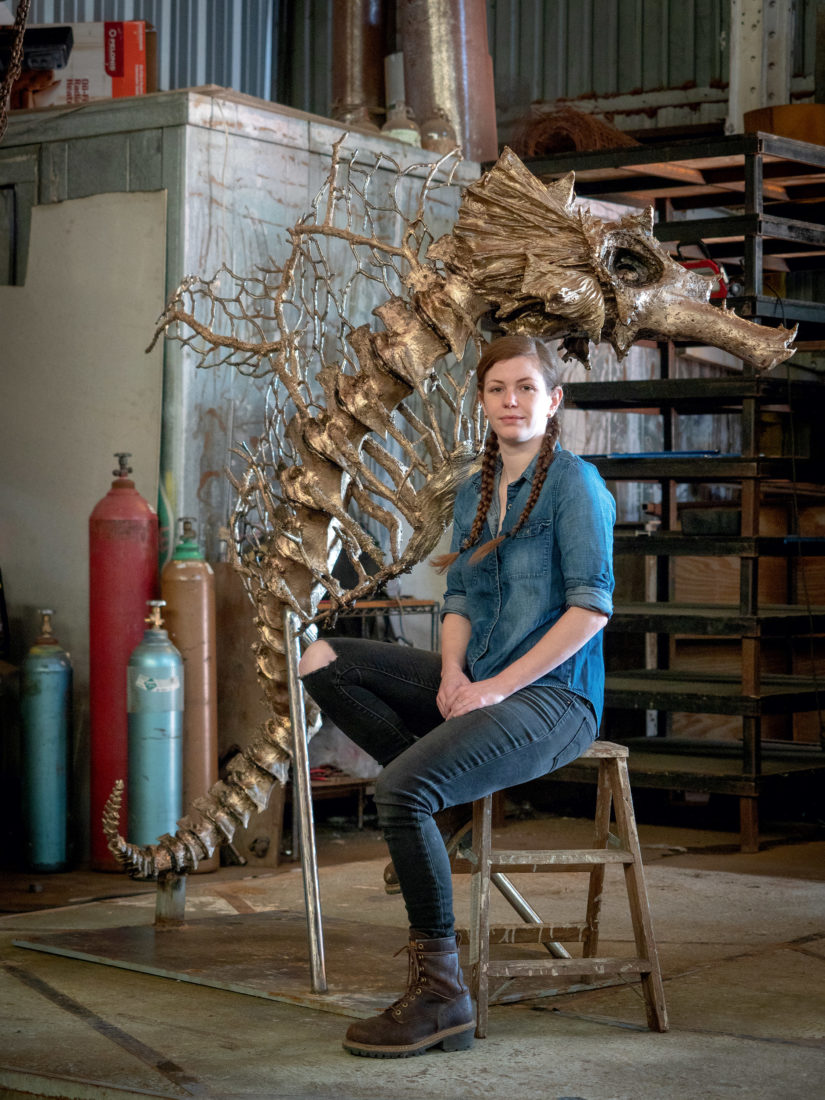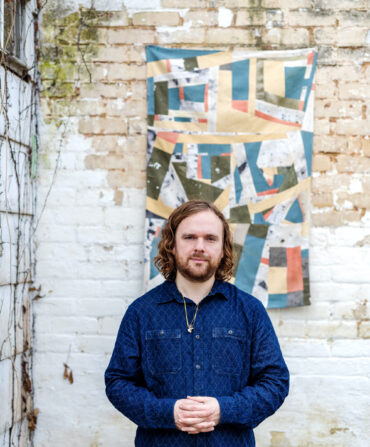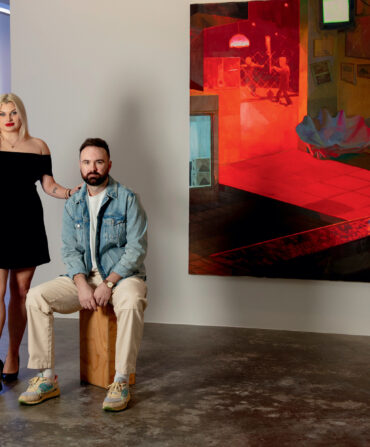Ashley Pridmore grew up in a tiny town in the Finger Lakes region of Upstate New York, surrounded by family (her dad was one of ten kids, she is one of seven) and “running around like a feral child,” climbing waterfalls and swimming creeks where she caught snapping turtles and crawfish to study them in her homemade terrarium. She kept a stash of bones and branches; she sneaked onto tennis courts at night to capture luna moths attracted by the lights. There was also a stream of slightly more supervised pursuits. “My dad decided at some point before I was born to throw out the television and never look back, so our childhoods were filled with craft projects, piano lessons, and fort building,” she says. “I wanted to be, and was, an artist before I could even verbalize the thought.” One of her earliest possessions was a point-and-shoot camera: “I decided I was going to be a National Geographic photographer so I could travel to every point of the world.”
Instead, Pridmore is a draftsman and sculptor who documents—and transforms—the natural world that is so much a part of her DNA. In April, her St. Kampos, an eight-foot-tall bronze “sea beast,” was installed in New Orleans on Poydras Street as part of a public-private partnership between the city’s Department of Parks and Parkways, the Ogden Museum of Southern Art, and the Helis Foundation, from which she received a significant grant. In October, she’ll have her first solo show in the United States, also in New Orleans, at the Soren Christensen Gallery. The exhibit will include massive charcoal drawings and small sculptures, as well as an abstract installation that will re-create the themes of her work in an immersive way. “The idea,” she says, “is to create the objects and situate them in the environment they possibly came from.”
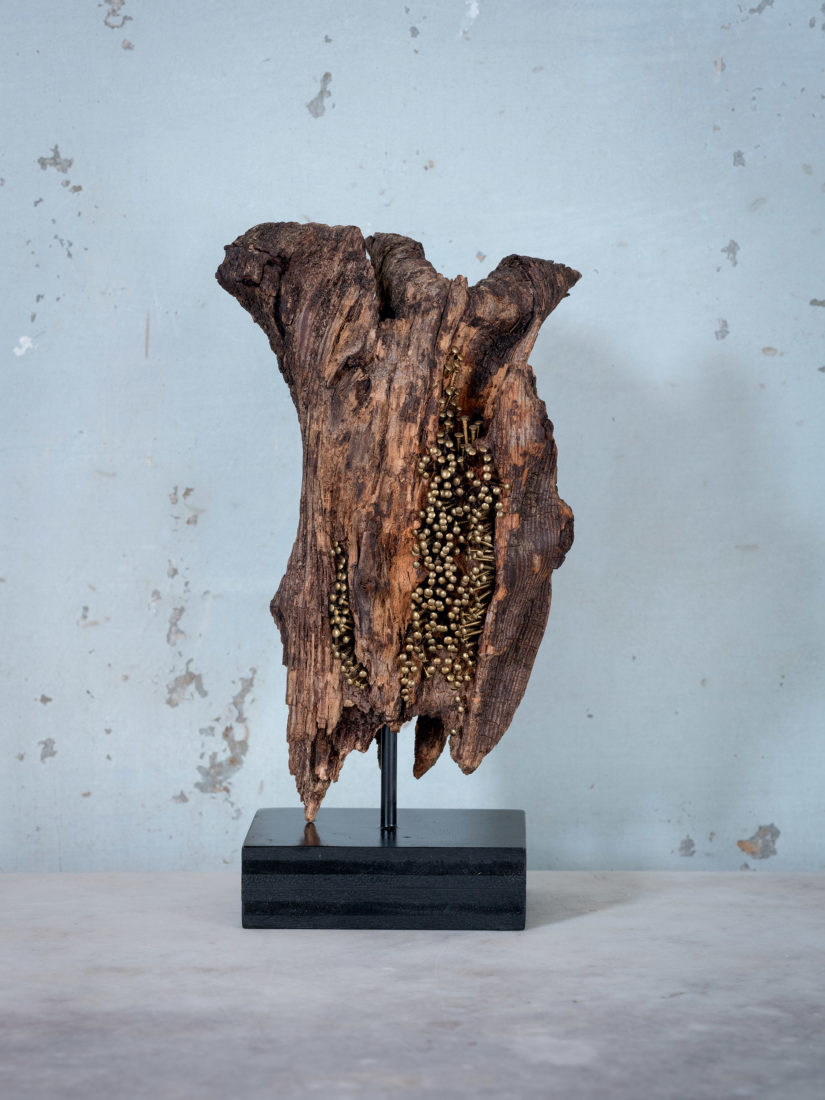
Photo: Paul Costello
The Climbing Tree.
Possibly is the operative word. Once in Pridmore’s hands, her “objects” no longer exactly exist in nature. A papier-mâché and beeswax coyote skull called Guarding Nefertiti, for example, is adorned with incredibly lifelike but highly unlikely barnacles. Yet the piece looks as if it somehow evolved that way, as does a sea horse whose spine has sprouted porcupine quills and crab-apple thorns, or a piece of found pine with tiny brass brads climbing its crevices like an especially glossy fungus. The works, she says, “tell a new story” when the contrasting components combine. “All of her work celebrates the cycle of life and death,” says Bradley Sumrall, Curator of the Collection at the Ogden. “Death is not necessarily a bad thing because you see life creeping back in. There’s a real spirituality to the pieces—they’re almost like talismans. But she’s also very process oriented. The first thing that stood out to me was how she had mastered papier-mâché and mimicked bone with it—even holding it in your hand, you can’t tell the difference.”
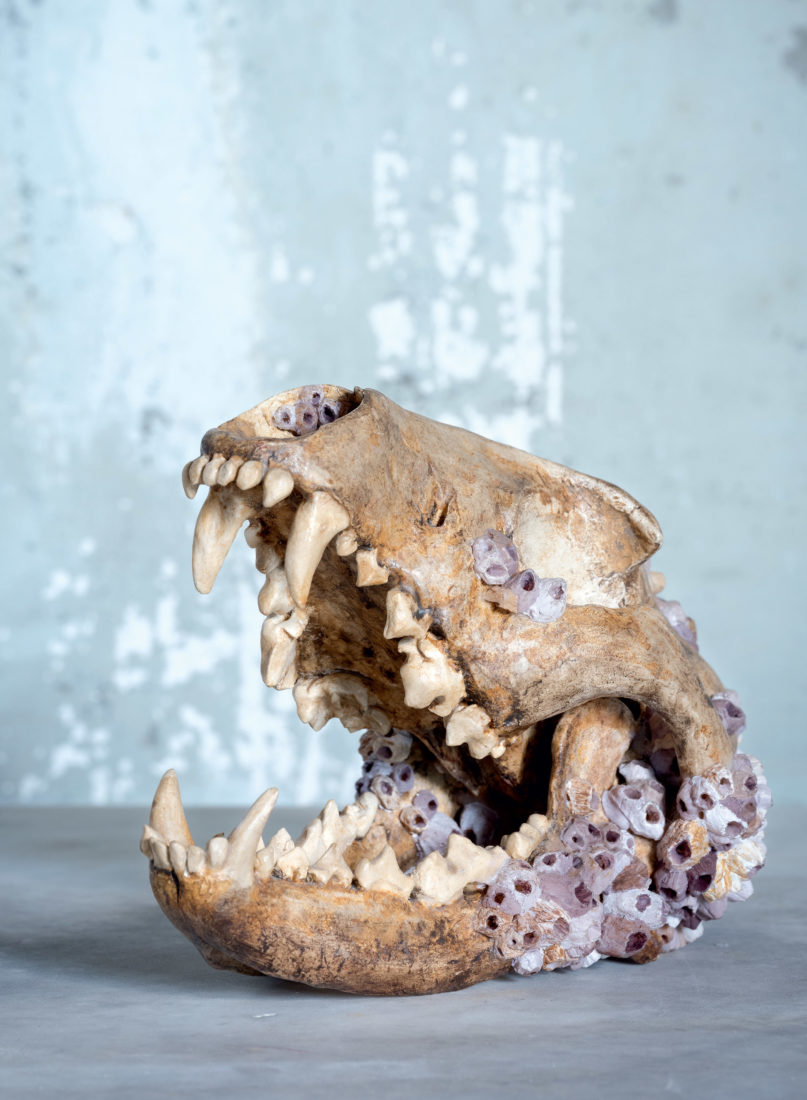
Photo: Paul Costello
A papier-mâché coyote skull.
Though Pridmore earned her BFA at Virginia Commonwealth University in 2007 and apprenticed with the Texas-born painter John Alexander, whose New York studio she managed for seven years, her father had recognized her potential long before, arranging drawing lessons and, perhaps more important, teaching her how to stick-weld at the age of fourteen. “At that moment, my fate was sealed,” she says. Welding was an essential skill during her yearlong work on St. Kampos, a bronze rendering of the skeleton of one of Poseidon’s hippocampi, with a spine originally crafted in papier-mâché, along with found driftwood, lichen-covered branches, and dried lily leaves.
So far, the public’s reaction to the work has been much the same as that of her mentor Alexander. “When I’m confronted with a piece of art I like,” he says, “there are three ways I react: ‘That’s nice,’ ‘That’s really beautiful or interesting,’ or ‘Holy shit, what did I just see?’ In St. Kampos, Ashley has created an original, soulful sculpture that represents what great art is meant to be.”


